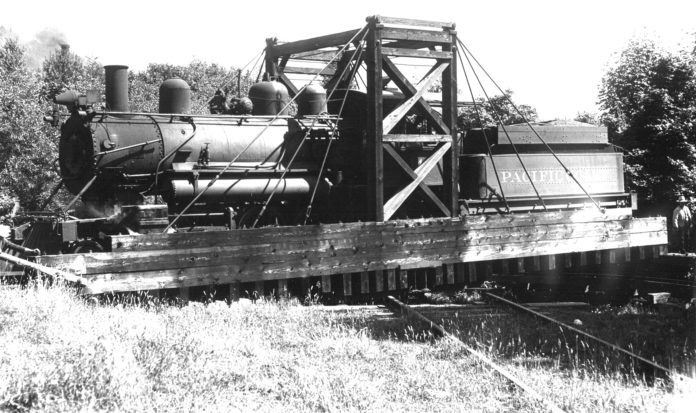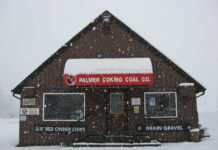Four miles east of Hobart lay Taylor, a coal and clay mining town. It was the last stop on a branch line originally constructed by the Columbia & Puget Sound Railroad, renamed Pacific Coast Railroad in 1916. Being a last stop, the problem arose as to how to turn around the locomotive or train.
There were two common ways – a railroad wye or a turntable. A railroad wye, shaped like the letter Y was a triangular junction featuring a track arrangement with three legs and switches to turn a train and point it back from where it came. According to Marc Robertson, a railroader and descendant of Black Diamond’s Banchero family, “If there wasn’t a way to turn the locomotive around – especially in the steam days – the engineer had to run the engine backwards with tender to the front of the movement.
Some engines were fitted with a headlight on the tender, but it still would be hard for the engineer to run backwards for long distances.” A tender was a special car for carrying a steam locomotive’s water and fuel, typically coal. Wyes were also expensive and consumed large areas of flat land.
A turntable, as seen in this 1943 photo was a rotating platform with tracks upon which a locomotive could be swung round for an about-face. Pacific Coast engine No. 14 is shown on the turntable halfway through its spin. By the time of this photo, Taylor’s 50-year mining history which, began in 1893 was coming to an end.
Three years later, the Seattle Water Department won their condemnation lawsuit and the dismantling of Taylor was soon complete. This image comes courtesy of JoAnne Matsumura, an Issaquah historian, while background information on the Taylor turntable was provided by Dick Peacock, President of the Maple Valley Historical Society. For more on the mechanics of turning trains, Google the article, “Why doesn’t a wye look like a Y?” by Ken Jensen.







